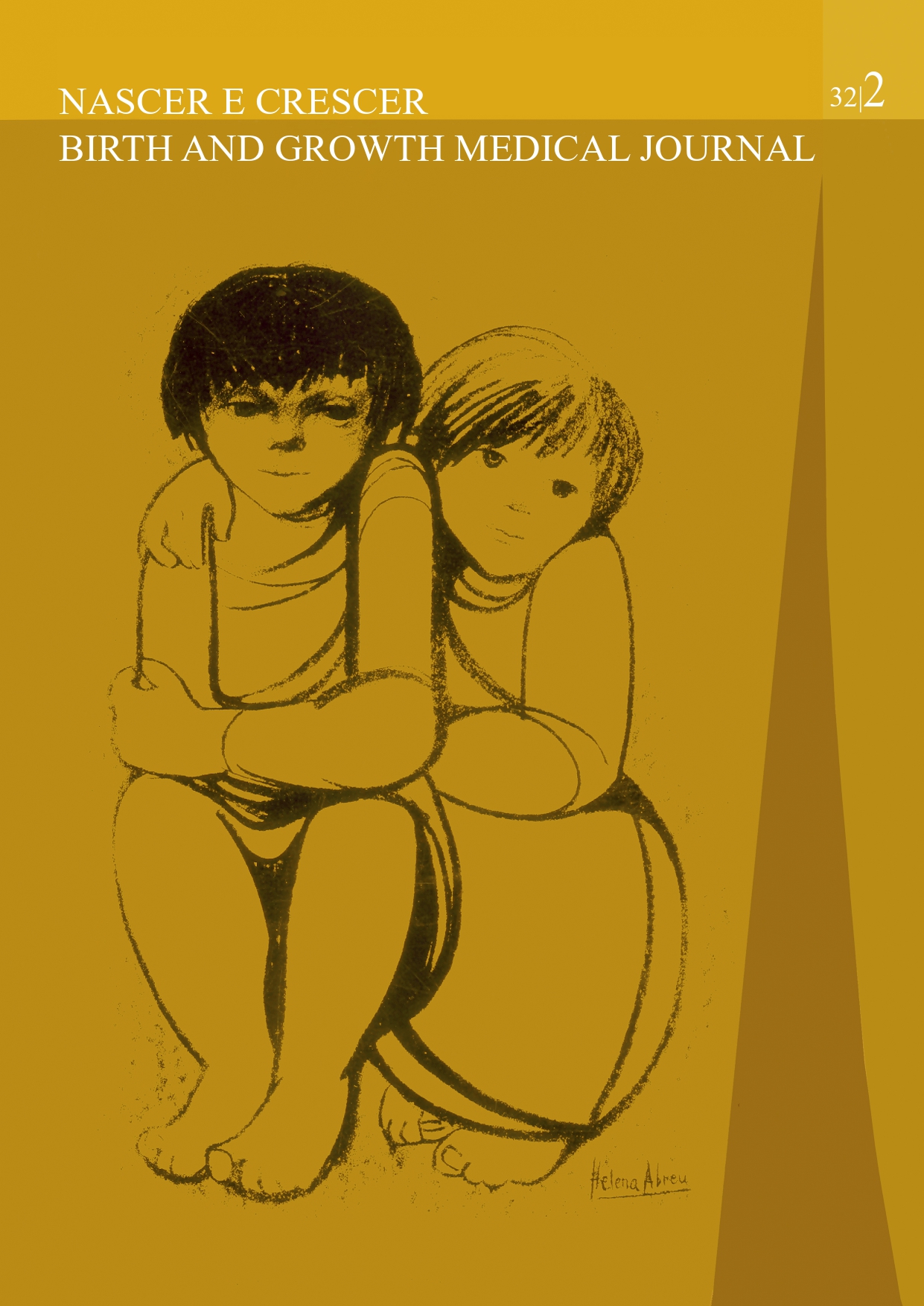A dangerous secret – A case report of battery ingestion
DOI:
https://doi.org/10.25753/BirthGrowthMJ.v32.i2.22591Keywords:
battery, coin, foreign body, radiographAbstract
Foreign body ingestion is a common problem in Pediatrics that can be fatal.(1-3) Because the clinical presentation is unspecific, the diagnosis is usually based on the history reported by the caregivers and confirmed by radiograph.(1-3) If history is not reported, the diagnosis can be challenging, so a high index of suspicion is required. The differentiation between foreign bodies of similar size and shape is also essential to define the urgency of the approach.(1-3) A case of unwitnessed button battery ingestion is presented in this report.
Downloads
References
Connors GP. Pediatric foreign body ingestion. https://www.ncbi.nlm.nih.gov/books/NBK430915/. Last Updated: January 23, 2019.
Gilger MA. Foreign bodies of the esophagus and gastrointestinal tract in children. UpToDate, February 2019.
Kelly Sinclair. Button and cylindrical battery ingestion: Clinical features, diagnosis, and initial management. UpToDate, January 2019.
Kramer RE, Lerner DG, Lin T, Manfredi M, Shah M, Stephen TC, et al. Management of Ingested Foreign Bodies in Children: A Clinical Report of the NASPGHAN Endoscopy Committee. J Pediatr Gastroenterol Nutr. 2015; 60(4): 562-74. doi: https://doi.org/10.1097/MPG.0000000000000729.
Downloads
Published
How to Cite
Issue
Section
License
Copyright (c) 2023 Ana Catarina Fernandes, Mariana Gaspar, Maria Bandeira Duarte, Alexandra Gavino, Aldina Lopes

This work is licensed under a Creative Commons Attribution-NonCommercial 4.0 International License.
Copyright and Authors' Rights
All articles published in Nascer e Crescer - Birth and Growth Medical Journal are Open Access and comply with the requirements of funding agencies or academic institutions. For use by third parties, Nascer e Crescer - Birth and Growth Medical Journal adheres to the terms of the Creative Commons License "Attribution - Non-Commercial Use (CC-BY-NC)".
It is the author's responsibility to obtain permission to reproduce figures, tables, etc. from other publications.
Authors must submit a Conflict of Interest statement and an Authorship Form with the submission of the article. An e-mail will be sent to the corresponding author confirming receipt of the manuscript.
Authors are permitted to make their articles available in repositories at their home institutions, provided that they always indicate where the articles were published and adhere to the terms of the Creative Commons license.


